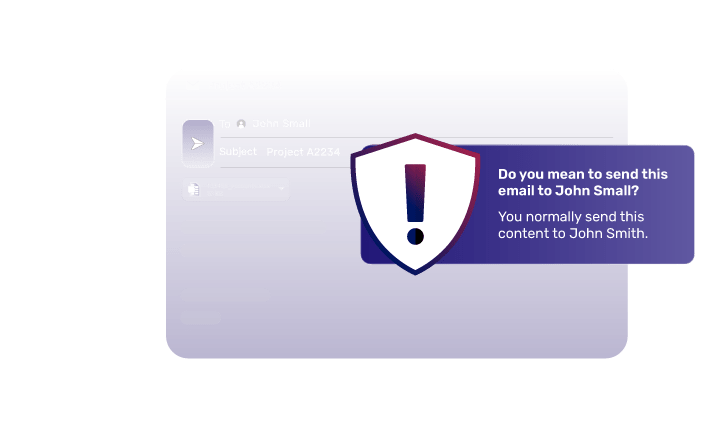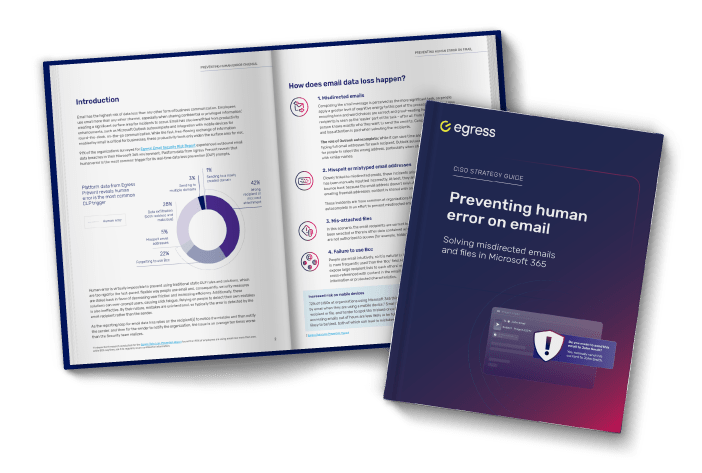Sed diam voluptua. At vero eos et accusam et justo duo dolores et Lorem ipsum dolor sit amet, consetetur sadipscing elitr. Sed diam voluptua. At vero eos et accusam et justo duo dolores et Lorem ipsum dolor sit amet, consetetur sadipscing elitr.
Strategy Guide
Preventing human error: Solving misdirected emails on Microsoft 365

Report
Lorem ipsum dolor sit amet, consectetuer adip
Download this guide to learn:

Lorem ipsum dolor sit amet, consetetur sadipscing elitr, sed diam nonumy eirmod tempor invidunt

Lorem ipsum dolor sit amet, consetetur sadipscing elitr, sed diam.

Sed diam voluptua. At vero eos et accusam et justo duo dolores et Lorem ipsum dolor sit amet, consetetur sadipscing elitr

Lorem ipsum dolor sit amet, consetetur sadipscing elitr, sed diam.
Register to attend
We will send you news and updates by email. You may opt out any time. We’ll store your information in accordance with our privacy policy.
Sed diam voluptua. At vero eos et accusam et justo duo dolores et Lorem ipsum dolor sit amet, consetetur sadipscing elitr.

Lorem ...
Sed diam voluptua. At vero eos et accusam et justo duo dolores et Lorem ipsum dolor sit amit.
Sed diam voluptua. At vero eos et accusam et justo duo dolores et Lorem ipsum dolor sit amet, consetetur sadipscing elitr.

Lorem ...
Sed diam voluptua. At vero eos et accusam et justo duo dolores et Lorem ipsum dolor sit amit.
Sed diam voluptua. At vero eos et accusam et justo duo dolores et Lorem ipsum dolor sit amet, consetetur sadipscing elitr. Sed diam voluptua. At vero eos et accusam et justo duo dolores et Lorem ipsum dolor sit amet, consetetur sadipscing elitr.
Sed diam voluptua. At vero eos et accusam et justo duo dolores et Lorem ipsum dolor sit amet, consetetur sadipscing elitr.

Lorem ...
Sed diam voluptua. At vero eos et accusam et justo duo dolores et Lorem ipsum dolor sit amit.
Sed diam voluptua. At vero eos et accusam et justo duo dolores et Lorem ipsum dolor sit amet, consetetur sadipscing elitr. Sed diam voluptua. At vero eos et accusam et justo duo dolores et Lorem ipsum dolor sit amet, consetetur sadipscing elitr.
Sed diam voluptua. At vero eos et accusam et justo duo dolores et Lorem ipsum dolor sit amet, consetetur sadipscing elitr.

Lorem ...
Sed diam voluptua. At vero eos et accusam et justo duo dolores et Lorem ipsum dolor sit amit.
Sed diam voluptua. At vero eos et accusam et justo duo dolores et Lorem ipsum dolor sit amet, consetetur sadipscing elitr. Sed diam voluptua. At vero eos et accusam et justo duo dolores et Lorem ipsum dolor sit amet, consetetur sadipscing elitr.
Sed diam voluptua. At vero eos et accusam et justo duo dolores et Lorem ipsum dolor sit amet, consetetur sadipscing elitr.

Lorem ...
Sed diam voluptua. At vero eos et accusam et justo duo dolores et Lorem ipsum dolor sit amit.
Sed diam voluptua. At vero eos et accusam et justo duo dolores et Lorem ipsum dolor sit amet, consetetur sadipscing elitr. Sed diam voluptua. At vero eos et accusam et justo duo dolores et Lorem ipsum dolor sit amet, consetetur sadipscing elitr.
Sed diam voluptua. At vero eos et accusam et justo duo dolores et Lorem ipsum dolor sit amet, consetetur sadipscing elitr.

Lorem ...
Sed diam voluptua. At vero eos et accusam et justo duo dolores et Lorem ipsum dolor sit amit.
Sed diam voluptua. At vero eos et accusam et justo duo dolores et Lorem ipsum dolor sit amet, consetetur sadipscing elitr. Sed diam voluptua. At vero eos et accusam et justo duo dolores et Lorem ipsum dolor sit amet, consetetur sadipscing elitr.
Related resources

Sed diam voluptua. At vero eos et accusam et justo duo dolores et Lorem ipsum dolor sit amet

Sed diam voluptua. At vero eos et accusam et justo duo dolores et Lorem ipsum dolor sit amet

Sed diam voluptua. At vero eos et accusam et justo duo dolores et Lorem ipsum dolor sit amet
Sessions
Speakers

Tony Pepper
CEO, Egress

Chris Novak
Cybersecurity Advisor, The White House

Perry Carpenter
Chief Evangelist, KnowBe4
The Mind’s Lie: How to respond to employees’ thoughts and actions being hacked
We’re all wired to deceive and be deceived. Join Perry Carpenter and Jack Chapman for an engaging exploration into the dark world of deception and the current threats people face.
After laying the groundwork on the art and science behind why people fall victim to social engineering, Perry and Jack will walk through practical examples of how cybercriminals exploit our decision-making processes and provide insight into the ways organizations can respond through a combination of technology and education.
Speakers

Tony Pepper
CEO, Egress

Chris Novak
Cybersecurity Advisor, The White House

Perry Carpenter
Chief Evangelist, KnowBe4
The Mind’s Lie: How to respond to employees’ thoughts and actions being hacked
We’re all wired to deceive and be deceived. Join Perry Carpenter and Jack Chapman for an engaging exploration into the dark world of deception and the current threats people face.
After laying the groundwork on the art and science behind why people fall victim to social engineering, Perry and Jack will walk through practical examples of how cybercriminals exploit our decision-making processes and provide insight into the ways organizations can respond through a combination of technology and education.
Speakers

Tony Pepper
CEO, Egress

Chris Novak
Cybersecurity Advisor, The White House

Perry Carpenter
Chief Evangelist, KnowBe4
The Mind’s Lie: How to respond to employees’ thoughts and actions being hacked
We’re all wired to deceive and be deceived. Join Perry Carpenter and Jack Chapman for an engaging exploration into the dark world of deception and the current threats people face.
After laying the groundwork on the art and science behind why people fall victim to social engineering, Perry and Jack will walk through practical examples of how cybercriminals exploit our decision-making processes and provide insight into the ways organizations can respond through a combination of technology and education.
Speakers

Tony Pepper
CEO, Egress

Chris Novak
Cybersecurity Advisor, The White House

Perry Carpenter
Chief Evangelist, KnowBe4
The Mind’s Lie: How to respond to employees’ thoughts and actions being hacked
We’re all wired to deceive and be deceived. Join Perry Carpenter and Jack Chapman for an engaging exploration into the dark world of deception and the current threats people face.
After laying the groundwork on the art and science behind why people fall victim to social engineering, Perry and Jack will walk through practical examples of how cybercriminals exploit our decision-making processes and provide insight into the ways organizations can respond through a combination of technology and education.
Speakers

Tony Pepper
CEO, Egress

Chris Novak
Cybersecurity Advisor, The White House

Perry Carpenter
Chief Evangelist, KnowBe4
The Mind’s Lie: How to respond to employees’ thoughts and actions being hacked
We’re all wired to deceive and be deceived. Join Perry Carpenter and Jack Chapman for an engaging exploration into the dark world of deception and the current threats people face.
After laying the groundwork on the art and science behind why people fall victim to social engineering, Perry and Jack will walk through practical examples of how cybercriminals exploit our decision-making processes and provide insight into the ways organizations can respond through a combination of technology and education.
Speakers

Tony Pepper
CEO, Egress

Chris Novak
Cybersecurity Advisor, The White House

Perry Carpenter
Chief Evangelist, KnowBe4
The Mind’s Lie: How to respond to employees’ thoughts and actions being hacked
We’re all wired to deceive and be deceived. Join Perry Carpenter and Jack Chapman for an engaging exploration into the dark world of deception and the current threats people face.
After laying the groundwork on the art and science behind why people fall victim to social engineering, Perry and Jack will walk through practical examples of how cybercriminals exploit our decision-making processes and provide insight into the ways organizations can respond through a combination of technology and education.
Speakers

Tony Pepper
CEO, Egress

Chris Novak
Cybersecurity Advisor, The White House

Perry Carpenter
Chief Evangelist, KnowBe4
The Mind’s Lie: How to respond to employees’ thoughts and actions being hacked
We’re all wired to deceive and be deceived. Join Perry Carpenter and Jack Chapman for an engaging exploration into the dark world of deception and the current threats people face.
After laying the groundwork on the art and science behind why people fall victim to social engineering, Perry and Jack will walk through practical examples of how cybercriminals exploit our decision-making processes and provide insight into the ways organizations can respond through a combination of technology and education.
I'm a header that can be moved anywhere
I'm a header that can be moved anywhere
I'm some paragraph text to go with the header
92%
implement a defense-in-depth strategy
69%
have between 11-30+ security products
49%
feel their security stack is too complex

Relying on people to detect their own mistakes is not enough
As the reporting loop for email data loss relies on the recipient(s) to notice the mistake and then notify the sender, and then for the sender to notify the organization, the issue is on average ten times worse than the Security team realizes.

Cybersecurity leaders share how outbound email security incidents have impacted their organizations
Impacts from outbound email security incidents affect both the organization as a whole and the individual employee involved.
Even when security incidents are kept out of the headlines, clients and data subjects must be informed. While human error is universal to every organization, outbound email security incidents are often interpreted as careless or negligent

Out of 800 IT leaders...
Defense-in-depth is a popular strategy. Yet despite organizations constantly adding more layers to their security stacks, they remain vulnerable to inbound attacks and outbound breaches.
This report explores the drawbacks of introducing too many vendors and security technologies into your business, and why streamlining around one or several vendor suites can improve overall security.

Out of 800 IT leaders...
Defense-in-depth is a popular strategy. Yet despite organizations constantly adding more layers to their security stacks, they remain vulnerable to inbound attacks and outbound breaches.
This report explores the drawbacks of introducing too many vendors and security technologies into your business, and why streamlining around one or several vendor suites can improve overall security.

Lorem ipsum dolor sit amet consectetur adipisicing elit. Eveniet quibusdam quis sit.

Minima mollitia optio esse est blanditiis ex possimus provident officia, enim libero quo sapiente quod porro.

Out of 800 IT leaders...
Defense-in-depth is a popular strategy. Yet despite organizations constantly adding more layers to their security stacks, they remain vulnerable to inbound attacks and outbound breaches.
This report explores the drawbacks of introducing too many vendors and security technologies into your business, and why streamlining around one or several vendor suites can improve overall security.

Out of 800 IT leaders...
Defense-in-depth is a popular strategy. Yet despite organizations constantly adding more layers to their security stacks, they remain vulnerable to inbound attacks and outbound breaches.
This report explores the drawbacks of introducing too many vendors and security technologies into your business, and why streamlining around one or several vendor suites can improve overall security.

Out of 800 IT leaders...
Defense-in-depth is a popular strategy. Yet despite organizations constantly adding more layers to their security stacks, they remain vulnerable to inbound attacks and outbound breaches.
This report explores the drawbacks of introducing too many vendors and security technologies into your business, and why streamlining around one or several vendor suites can improve overall security.

Out of 800 IT leaders...
Defense-in-depth is a popular strategy. Yet despite organizations constantly adding more layers to their security stacks, they remain vulnerable to inbound attacks and outbound breaches.
This report explores the drawbacks of introducing too many vendors and security technologies into your business, and why streamlining around one or several vendor suites can improve overall security.

Earum enim voluptatum animi quisquam voluptates hic aliquid necessitatibus magni fugit rerum

Numquam quo tenetur dicta quibusdam officiis. Labore aliquam ducimus obcaecati
Out of 800 IT leaders...
Defense-in-depth is a popular strategy. Yet despite organizations constantly adding more layers to their security stacks, they remain vulnerable to inbound attacks and outbound breaches.
This report explores the drawbacks of introducing too many vendors and security technologies into your business, and why streamlining around one or several vendor suites can improve overall security.
Out of 800 IT leaders...
Defense-in-depth is a popular strategy. Yet despite organizations constantly adding more layers to their security stacks, they remain vulnerable to inbound attacks and outbound breaches.
This report explores the drawbacks of introducing too many vendors and security technologies into your business, and why streamlining around one or several vendor suites can improve overall security.
Out of 800 IT leaders...
Defense-in-depth is a popular strategy. Yet despite organizations constantly adding more layers to their security stacks, they remain vulnerable to inbound attacks and outbound breaches.
This report explores the drawbacks of introducing too many vendors and security technologies into your business, and why streamlining around one or several vendor suites can improve overall security.
Out of 800 IT leaders...
Defense-in-depth is a popular strategy. Yet despite organizations constantly adding more layers to their security stacks, they remain vulnerable to inbound attacks and outbound breaches.
This report explores the drawbacks of introducing too many vendors and security technologies into your business, and why streamlining around one or several vendor suites can improve overall security.
Out of 800 IT leaders...
Defense-in-depth is a popular strategy. Yet despite organizations constantly adding more layers to their security stacks, they remain vulnerable to inbound attacks and outbound breaches.
This report explores the drawbacks of introducing too many vendors and security technologies into your business, and why streamlining around one or several vendor suites can improve overall security.
Out of 800 IT leaders...
Defense-in-depth is a popular strategy. Yet despite organizations constantly adding more layers to their security stacks, they remain vulnerable to inbound attacks and outbound breaches.
This report explores the drawbacks of introducing too many vendors and security technologies into your business, and why streamlining around one or several vendor suites can improve overall security.
Accusamus molestiae corporis delectus rerum mollitia?
Sed, officia. Minima mollitia optio esse est blanditiis ex possimus provident.

86%
suffered negative impacts due to an outbound breach
49%
saw financial loss due to regulatory penalties


Traditional email DLP solutions rely on static rules to prevent data loss. These solutions, however, take a data-led approach to security, rather than a behavior-based approach, and therefore cannot dynamically respond to the way people use email on a day-to-day basis.
Download the full report

Lorem ipsum dolor sit amet, consetetur sadipscing elitr, sed diam nonumy eirmod tempor invidunt ut labore et dolore magna aliquyam erat, sed diam voluptua.
John Smith, Head of Security at Browns Ltd.
92%
implement a defense-in-depth strategy
49%
feel their security stack is too complex

Download your free report



© 2007-2024. All rights reserved. Egress Software Technologies Ltd.
